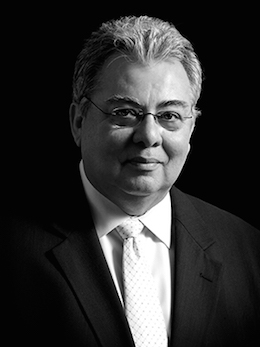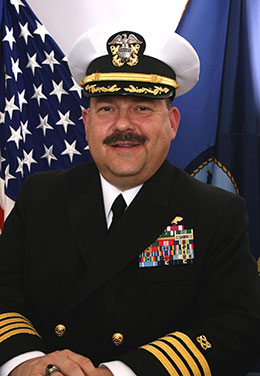In honor of Veterans Day on November 11, we’d like to spotlight a few of our architect heroes for their contributions to the profession and the nation.
Cormac Phalen
Cormac Phalen, a former Patriot Missile Crewchief during Operation Desert Storm and Determined Resolve, watched construction sites as a young boy and was enamored with the process. Being more interested in the artistic side of what he saw, he decided early on he wanted to be an architect, before he really knew what that meant.
After receiving his B.Arch at Auburn University 2001, he went straight to work at an architecture firm. Phalen’s military training taught him the importance of gaining experience, so he set his sights on working for 10 years before taking the ARE.
As a disabled Veteran, Phalen believes in designing more holistically so that elements of accessibility are immersed in design, benefitting overall aesthetic and function. For example, as project designer and manager of the Annapolis Elementary School revitalization, a historic landmark and oldest operating school in Maryland, he and his colleagues embraced the opportunity to design a building that incorporated gradual elevation changes throughout the building; integrating large windows overlooking the landscape at different intervals so that people could enjoy the views of the Bay or historic downtown Annapolis from every angle. This type of design ensures that everyone experiences the building in the same way, creating a more harmonious environment.
“We need to push past the minimums and figure out how accessibility devices can be immersed into the overall design and not a side thought," Phalen said.
Phalen currently works at Ayers Saint Gross Architects and is on his path to licensure. He also cohosts Archispeak, a popular podcast for architects. Phalen hopes to finish his exams before ARE 5.0 launches in 2016.
Pasqual Gutierrez, AIA

Pasqual Gutierrez is a recipient of the Purple Heart, Silver Star, and Bronze Star with “V” Device, signifying acts of valor in combat, all of which he earned serving in the Army during the Vietnam War. His Alpha Troop received a Presidential Unit Citation in 2009, in a special ceremony at the White House Rose Gardens to acknowledge their bravery in rescuing trapped soldiers after a ferocious battle.
After the war, he began his journey to become an architect by attending East Los Angeles Community College and taking the California apprenticeship path to licensure. His strong work ethic from the military, coupled with support mentors who steered him down the right path, helped him achieve licensure by 1983.
As a lifetime member of the 11th Armored Calvary’s Veterans of Vietnam and Cambodia, Gutierrez and other members give back to veterans through a scholarship fund given to members of deserving veteran families to help them achieve their dreams. He is committed to setting an example for aspiring architects, and doing anything possible to support other veterans who, “without uniform are difficult to detect, and may silently struggle with their return to society,” Gutierrez said. He also believes in designing spaces that “nurture the human soul and offer peace in an environment, tranquility and safety against the memories of war,” as many veterans suffer from triggers that remind them of darker days.
One example of tranquil design is his involvement in The Frontier Project, an award-winning, LEED-certified building for the Cucamonga Valley Water District to demonstrate, educate, and promote conscientious resource conservation and sustainability in design. The project features water harvesting, storm water management, green roofs, solar power, a cool tower, solar chimneys, and renewable finish materials, all while maintaining a peaceful, airy feel that invigorates the soul. The vision for the project was to embody a spirit of being on the “edge of what we know” of sustainable design—to push ourselves to find new ways to respond to our impact on the environment.
Gutierrez is currently managing principle at HMC Architects, as well as a member of the California Architects Board and NCARB’s Licensure Task Force.
Michael Rafael Merino, AIA, NCARB

Michael Merino, captain in the U.S. Navy, Civil Engineer Corps, dreamed of becoming an architect since junior high school. However, his path to becoming licensed was anything but ordinary. Merino joined the military at a young age, serving in Operation Desert Storm, Southern Watch, and Iraqi Freedom (among many others) in between graduating from California State Polytechnic University and taking the Architect Registration Examination® (ARE®). In addition to shaping his worldview, the recurrent war deployments gave Merino a new perspective on finishing the exam, as his final division, Building Design, was scheduled just before leaving for Desert Storm. Merino got word he passed while in Iraq, and looks back on this, among many other experiences, as proof of how his military service has had a profound effect on his career and life.
A strong believer in giving back, Merino has worked on several veteran-focused pro bono projects throughout his career, including designing and donating an A4 static aircraft monument to honor the U.S. Marine Corps. He has also remodeled Veteran Affairs facilities, keeping accessible design in mind. “Our profession must continue to be an advocate for accessible, practical, and reasonable design for disabled veterans,” Merino said.
Merino has also dedicated countless hours to advancing the profession, serving on several of NCARB’s examination committees and as a member of a National Architectural Accrediting Board (NAAB) visiting team. He is currently studio lead at AECOM and president of the Long Beach Council of the Navy League of United States.
Although we’ve only been able to share the stories of a few veterans, we know there are many more out there. We salute you and thank you all for your service. Happy Veterans Day!
Veterans, eligible dependents, and reservists can receive reimbursement for all divisions of the ARE. For more information, visit the Veterans Affairs Office website. Extensions are also available for active military service.
